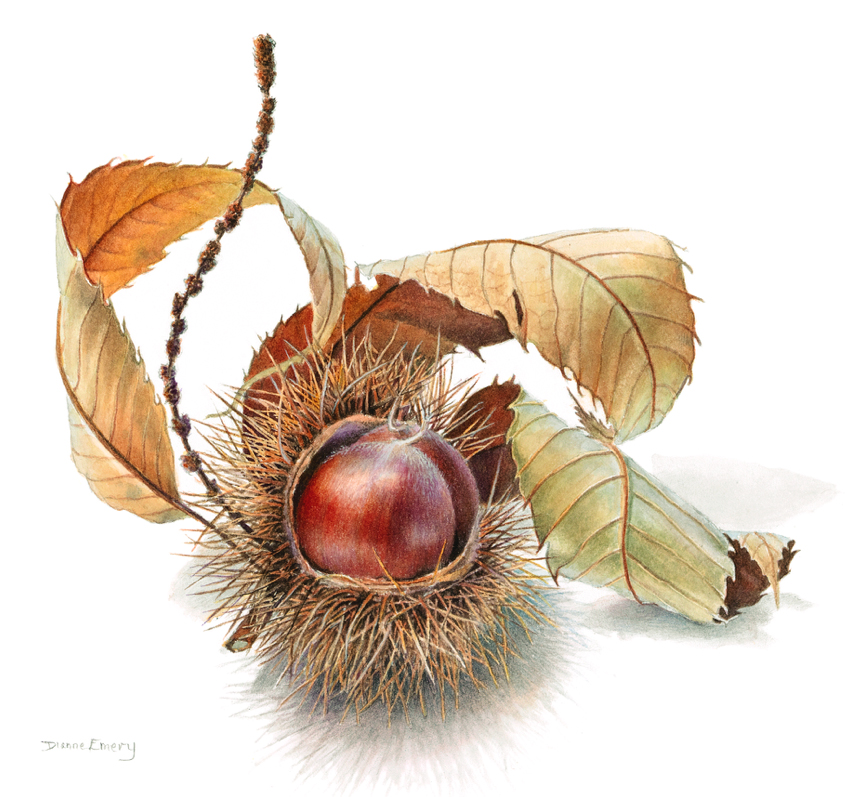Two recent Instagram posts tell the story of a bold and blatant brush-stroke-for-brush-stroke rip-off of an award-winning chestnut painting by renowned botanical artist, Dianne Emery. With Dianne’s permission I’m showing her chestnut painting above but I’m not showing the rip-off because I don’t want to give it any coverage it doesn’t deserve. And although the names attached to the Instagram posts below are a matter of public record, I’ve decided to not disclose them.
The first post (abbreviated): “I hope you enjoy this chestnut that I painted using watercolour. My inspiration was fall, of course, and also a photo I saw somewhere online. I loved painting this piece – art will be my solace.”
The second post (in response): “This painting was done by Dianne Emery and (this artist) is trying to pass it off as her own (she had it for sale on her Instagram account)! It might be worth checking to see if she has any of your work on her page. She definitely seems to have a vast variety of techniques!!”
The offending rip-off was apparently taken down after a barrage of indignant responses. But, sadly, and perhaps not surprisingly, Dianne has not received an apology.
While “master copies” or “copying the masters” has historically been a common practice in art, its purpose has always been instructional. It is a learning technique, particularly in classical art training. And while that is okay, passing off copies as originals, is very much not okay. In fact, for works still under copyright (where the artist has not been dead for 70-plus years in most countries), selling a copy can be illegal without permission. And aside from being illegal, it is morally reprehensible.
So, the lesson to be learned from this incident is that it’s a good idea to check the Internet from time to time to see if any of your paintings have been copied or in some other way stolen. You can do this quickly and easily with TinEye (click here) or Google (click here).

